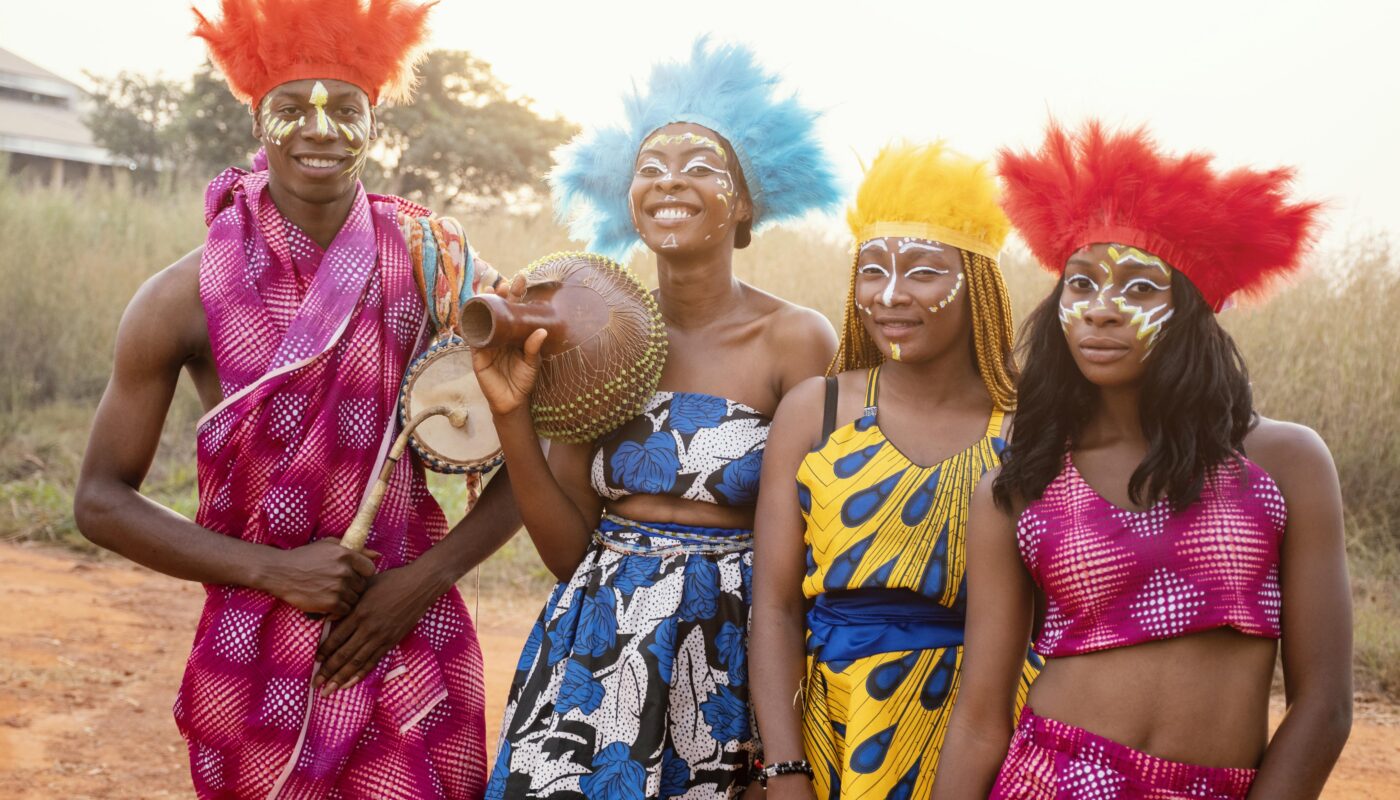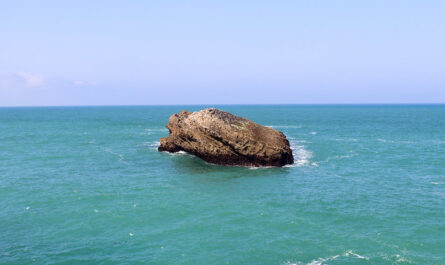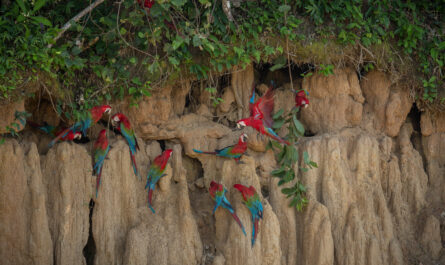New Britain, an island located in Papua New Guinea, is one of the most culturally diverse regions in the world. With over 50 different tribes, each possessing its own unique language, customs, art, and way of life, New Britain serves as a living testament to the resilience and richness of indigenous cultures. The tribes of New Britain, which include the Baining, Tolai, and Arawe among others, have managed to preserve their ancient traditions and practices despite the waves of outside influences that have shaped the region’s history. In this article, we will delve into the rich cultural traditions of New Britain’s tribes, exploring their unique customs, festivals, and beliefs that have been passed down for generations.
1. The Baining Tribe: Masters of Fire Dance and Rituals
The Baining people, residing in the interior of New Britain, are perhaps most famous for their extraordinary fire dance rituals. The Baining tribe’s fire dance is not just a performance, but a spiritual and cultural ceremony that has been practiced for centuries. The ceremony, known as the Baining Fire Dance, is held during important life events such as harvest festivals, initiation ceremonies, and other cultural rites. This remarkable event features men dressed in elaborate masks and costumes, dancing around huge bonfires. The fire represents the life force, and the dancers use it as a way to communicate with their ancestors and the spirits of nature.
The dancers’ masks are crafted from local materials, such as coconut shells, bamboo, and palm fronds, and they often depict ancestral spirits or mythological beings. The masks are said to possess powerful spiritual significance and are believed to channel the energy of the spirit world. During the fire dance, the dancers leap and spin around the fire, performing dramatic and rhythmic movements that are intended to summon ancestral spirits and bring blessings to the community. The flames and heat are a symbol of purification, and those involved in the ceremony are believed to be protected by the spirits as they brave the intense heat of the flames.
The Baining tribe also has a rich oral tradition, with elders passing down stories, songs, and chants that recount their creation myths and the deeds of their ancestors. These stories are told in the Baining language, which is unique to the tribe, and the telling of these stories plays an essential role in preserving the cultural identity of the tribe.
2. The Tolai Tribe: Cultural Riches and the Festival of the Dead
The Tolai people, one of the largest and most well-known tribes of New Britain, live along the northeastern coast of the island, particularly in the area around Rabaul, the capital of East New Britain. The Tolai have a vibrant and complex culture, which includes a blend of traditional practices and influences from both the Melanesian and colonial pasts. A central part of the Tolai culture is their belief in the spirit world, where ancestral spirits are believed to interact with the living, influencing events and personal fortunes.
One of the most famous and culturally significant events in Tolai society is the Festival of the Dead, which is held periodically and can last for several days. During this festival, the Tolai honor their deceased ancestors by performing elaborate ceremonies that involve offerings, chanting, singing, and dancing. A crucial part of the festival involves the building of large wooden effigies, which represent the deceased. These effigies are adorned with brightly colored materials and are placed on ceremonial platforms where the community gathers to pay tribute.
The Tolai also practice kundu drumming, a traditional musical art that plays an important role in ceremonies, festivals, and celebrations. The kundu drum is a cylindrical, hand-held drum made from hollowed-out wood and covered with stretched animal skin. Its deep, resonant sound carries great spiritual meaning and is said to connect the living with the spirit world. The drumming is often accompanied by dance and chanting, creating a powerful cultural experience for those who participate and witness the performances.
The Tolai are also renowned for their traditional crafts, which include intricate basket weaving, shell jewelry making, and wood carving. These crafts are not just artistic endeavors but also have practical applications, as they are used in everyday life, as well as in ceremonies. The art of Tolai pottery is another ancient tradition that has been passed down through the generations, with families often inheriting skills in crafting pottery from their ancestors.
3. The Arawe Tribe: Seafaring Traditions and Canoe Building
The Arawe people, who inhabit the small islands off the southern coast of New Britain, have a long-standing tradition of seafaring. Their culture is deeply intertwined with the ocean, and the canoe plays a central role in their way of life. Canoes are not only used for transportation but also for fishing, trade, and ceremonial purposes. The Arawe are known for their expert craftsmanship in building and navigating traditional dugout canoes, which are carefully constructed from large tree trunks.
Canoe building is a skill that is passed down through generations, with each tribe having its own unique designs and methods of construction. The process involves selecting the right type of wood, shaping the canoe, and then carving intricate designs into the hull. These designs are not merely decorative; they often tell stories of the tribe’s history, migration, and connection to the natural world. The finished canoes are used in both practical and ceremonial contexts, with special canoes reserved for important social events and rituals.
The Arawe people also practice shell money as a form of trade and payment. Shells, particularly cowrie shells, are used to symbolize wealth and are integral to the exchange systems of the Arawe tribe. Shell money plays an important role in marriage negotiations, land transactions, and other social exchanges. The use of shell money is one of the oldest and most enduring traditions of the Arawe people, and it remains a significant part of their culture today.
4. The Kuanua Tribe: Music, Dance, and the Tavurvur Volcano
The Kuanua people are closely related to the Tolai, but they maintain their own distinct cultural identity. The Kuanua language is widely spoken in the Rabaul region, and their traditions are heavily influenced by the volcanic activity of the region. The Tavurvur volcano in Rabaul is of immense cultural significance to the Kuanua, as it has shaped the landscape and the lives of the people for centuries. The eruptions of Tavurvur are often viewed as manifestations of the anger of the gods or spirits, and the Kuanua hold rituals to appease these spirits and ensure the safety of their community.
One of the most important cultural practices of the Kuanua tribe is their music and dance. Kuanua music is known for its rhythmic complexity, with the use of traditional instruments such as drums, gongs, and flutes. Music and dance are integral parts of almost every Kuanua ceremony, from funerals to festivals, and they serve as a means of connecting with the spirit world and honoring the ancestors. The dances are highly stylized and often involve elaborate costumes, face paint, and body adornments that represent ancestral spirits, natural forces, or mythical beings.
The Kuanua people are also skilled in the art of tattooing. Tattoos hold spiritual and cultural significance, with each design representing a personal or family story, and they are often used in initiation rites for young men and women. Tattoos are seen as a form of protection, marking the individual as part of the tribe and its traditions.
5. The Cultural Influence of Colonialism and Modernization
While the tribes of New Britain have managed to preserve many of their traditional practices, they have also had to adapt to the challenges of colonialism and modernization. The arrival of European settlers and missionaries in the 19th and 20th centuries brought significant changes to the region, from the introduction of Christianity to the establishment of Western-style schools and governments. Despite these external pressures, the tribes of New Britain have maintained a strong sense of identity and pride in their heritage.
In recent years, there has been a resurgence of interest in traditional practices, as younger generations seek to reconnect with their roots and preserve their cultural heritage for future generations. Cultural festivals and events, such as the New Britain Cultural Festival, provide a platform for showcasing traditional dances, crafts, and ceremonies, helping to keep these rich cultural traditions alive in the face of globalization.
Conclusion
The tribes of New Britain are a vibrant and diverse tapestry of cultures, each with its own unique customs, beliefs, and practices. From the Baining fire dance to the Tolai Festival of the Dead, the Arawe’s seafaring traditions, and the Kuanua’s volcanic rituals, the cultural traditions of New Britain are a testament to the resilience and creativity of its indigenous peoples. Despite the challenges posed by modernization and outside influences, the tribes of New Britain continue to hold steadfast to their heritage, ensuring that their rich cultural legacy will be passed down for generations to come.



